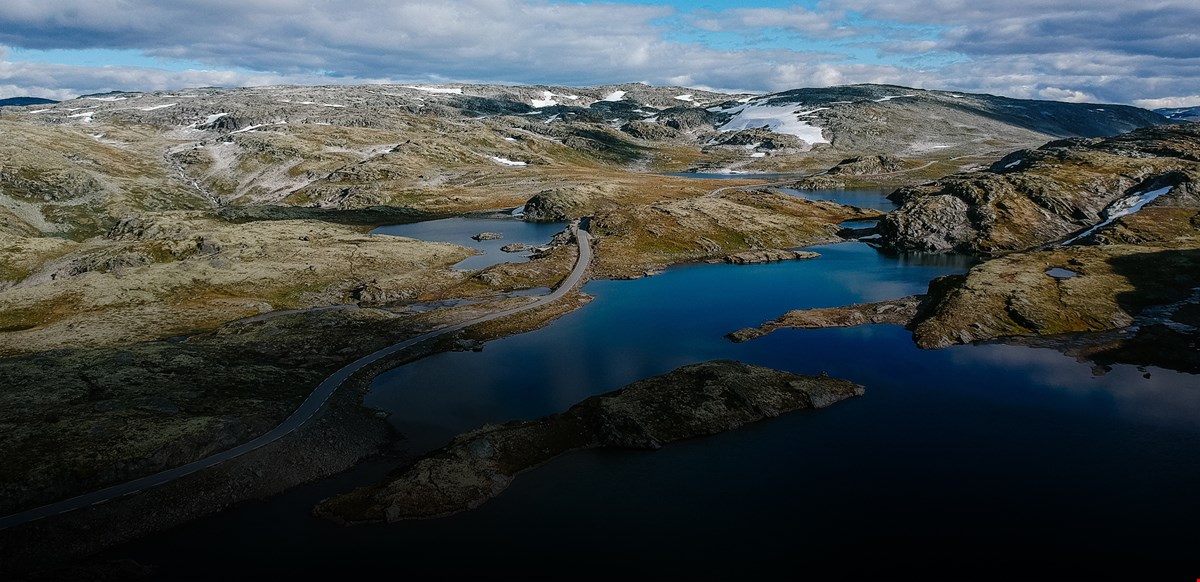

Solund Vestland county
Population
Area
On this page we have collected data and information that is intended as a starting point for assessing how the municipality is affected by climate risk. Scroll down to see how greenhouse gas emissions, climate change, investments and business structure may affect the climate risk Solund is exposed to.
Climate risk in Solund
Tap a category to display graphs for that category
Greenhouse gas emissions in the municipality
Change in the previous year
Emissions per citizen
Industrial emissions in Solund
Some firms are required to report indicators to the Norwegian Environment Agency, because the firm is associated with large emissions and/or a large environmental risk. Reported indicators include annual emissions, production volume, consumption of energy, and amounts of waste and hazardous waste produced. The table shows emissions from businesses obliged to report in Solund for the year of 2022.
The emissions are included in the municipality's overall emission accounts.
Note that only emissions from activities defined as industry are shown in the table. Emissions from offshore operations, sewage treatment plants and landfills are therefore not shown here.
Large emissions from land-based industry are considered to be a relevant proxy for transition risk. This is because it's likely that high-emitting businesses will be required to reduce their emissions in the future, and that some will face a decrease in demand for their products.
If these businesses also employ a large proportion of the local workforce, the risk is amplified as the local community may experience the loss of many jobs at the same time (a "cornerstone effect"). This can have dramatic effects on budgets as tax revenue is reduced.
The greenhouse gas accounts include emissions from three different greenhouse gases. To compare the global warming potential (GWP) of these, tonnes of CO2 equivalents is used as the common unit of measurement. Carbon dioxide (CO2) has GWP = 1, nitrous oxide (N2O) has GWP = 298 and methane (CH4) has GWP = 25. The factors are taken from the IPCC's fourth main report, and are the same as used in the national emission accounts and in international reporting. Source: the methodology note accompying the Norwegian Environment Agency's municipality distributed emission statistics (in Norwegian).
Assessment of risk and vulnerability: Is the municipality prepared?
Solund municipality's complete Risk and Vulnerability Analysis(RVA) is from 2020.
The municipalities are obligated to have a holistic risk and vulnerability assessment (RVA). This serves as the municipality's management document for managing risk and should address natural events and climate risk. The Norwegian Directorate for Civil Protection (DSB) recommends updating it every four years in connection with the update of the plan strategy.
Sea level rise and storm surge
For coastal municipalities, sea level rise can be a source of climate risk. The overview shows the estimated sea level rise in the year 2090 as well as the extent of buildings, roads and area that may be flooded at medium tides in 2090 given these levels.
Estimated sea level rise per 2090
Sea level rise in 2090
Flooded areas at medium tides in 2090
Buildings
Roads
Area
Storm surge today and in 2090
Flooded areas at 200-year storm surge now
Buildings
Roads
Area
Flooded areas at 200-year storm surge in 2090
Buildings
Roads
Area
For future sea level rise, the upper bounds of scenario RCP 8.5 is applied. This is a scenario developed in the context of the IPCCs fifth assessment report, and represents a scenario with high emissions, without effective policies to reduce emissions. This is the scenario used by the Norwegian Mapping Authority and recommended for planning by the Norwegian Directorate for Civil Protection (DSB).
Predictions for future climate in Solund
This climate profile summarizes the concrete effects that climate change may have on Solund towards year 2100. The profile is based on the IPCC scenario RCP 8.5 - a scenario characterised by high emissions and a lack of effective policies to reduce emissions. The climate profile has been prepared by the Norwegian Centre for Climate Services (NCCS).
Projects financed with KBN's green loans
KBN offers green loans with reduced interest rates to municipal sector projects with clear climate- and environmental ambitions. These loans are financed with green bonds.
KBN offers green loans with reduced interest rates to municipal sector projects with clear climate- and environmental ambitions. These loans are financed with green bonds.
Contact us
Climate risk for industries essential to Solund
We have listed the industries that employ the most people in the municipality and that we believe may be affected by climate risk. The questions in the table are intended as a starting point for dialogue with the local business community. We have tried to indicate the degree of severity at an overall level but recommend that you make a separate assessment based on the local context.
| Risk | Consequences |
|---|---|
| High severity Sea temperatures | What does an increase in sea temperatures mean for the aquaculture industry, e.g. with regards to foodstuff consumption by salmon? What does an increase in sea temperatures mean for fishing, e.g. changes to keystone species, species combinations and food chains, and fluctuations in fish stocks? |
| High severity Climate risk in soy-producing countries | What does climate change in other countries mean in terms of access to certified soy for fish feed? |
| Risk | Consequences |
|---|---|
| High severity Stricter regulations / increase in the cost of emitting greenhouse gases | What will future regulations intended to reduce greenhouse gas emissions or an increase in the cost of emissions mean in terms of the ability to use diesel generators and vessels that only have internal combustion engines, or in terms of the cost of transporting products to customers, particularly by air freight? |
| Risk | Consequences |
|---|---|
| Medium severity Extreme weather (damage and adaptation) | What does an increase in extreme precipitation, e.g. droughts, extreme precipitation, floods or higher sea levels, mean for machinery and installations, e.g. in mining, oil and gas extraction, and construction and civil engineering? Could extreme weather result in new requirements or challenges for such machinery having to be taken into account ? |
| Risk | Consequences |
|---|---|
| Very high severity Less demand from the oil and gas industry | What will it mean for the oil and gas extraction machinery repair industry if the level of activity in the oil and gas sector decreases and the industry is phased out over the long term? |
| Very high severity Changes to requirements due to the electrification of machinery fleets | What will it mean for the agricultural and forestry machinery repair industry if machinery fleets are gradually electrified as a consequence of stricter regulations or an increase in the cost to emit CO2? |
| Risk | Consequences |
|---|---|
| None Apart from those resulting from the location of production facilities, there are no obvious physical risk factors for this industry. |
| Risk | Consequences |
|---|---|
| High severity Measures to reduce car traffic | What do measures to reduce car traffic, e.g. relocating junctions or toll booths, mean for the location of shopping centres? |
| High severity The transition to the circular economy | What does the transition to the circular economy and the increase in recycling mean for the retail sector? |
| Risk | Consequences |
|---|---|
| Medium severity Extreme weather (damage and adaptation) | What does an increase in extreme weather, particularly droughts and floods, mean for water transport for goods and passengers via rivers and lakes? |
| Risk | Consequences |
|---|---|
| Very high severity Carbon pricing | What would it mean if the duties charged on fuel or greenhouse gas emissions increased? |
| Very high severity Emissions regulations | What will be the impact of stricter regulations on emissions to the air and ballast water in Norway and internationally? |
| Very high severity Stricter requirements regarding alternative technologies for ferries | What is the impact of the growing requirement for ferry operators to use electric and hybrid solutions in order to be licensed to operate? |
| Risk | Consequences |
|---|---|
| Very high severity Extreme weather (damage and adaptation) | What does an increase in extreme weather, e.g. droughts, extreme precipitation, floods, storms or higher sea levels, mean in terms of the risk of erosion, the quantity and quality of crops, and the spread of (new) plant and animal diseases? |
| Very high severity Changes to weather patterns | What do changes to weather patterns mean for the growing season and overwintering conditions for plants? |
| Very high severity Climate change in other countries | What does the climate risk in other countries mean in terms of access to important commodities, e.g. soy? |
| Risk | Consequences |
|---|---|
| High severity Stricter regulations / increase in the cost of emitting greenhouse gases | What will future regulations intended to reduce greenhouse gas emissions or an increase in the cost of emissions mean for machinery fleets? |
| High severity Changes to consumer preferences | How might a decrease in demand for animal products (meat, dairy products) impact agriculture in the municipality? |
The sample is based on Statistics Norway's statistics on employment by place of residence (table 08536). You can learn more about how we have selected the industries in the methodology note.
At this time, we do not have any data for [blockname]
At this time, we have some problem viewing data

